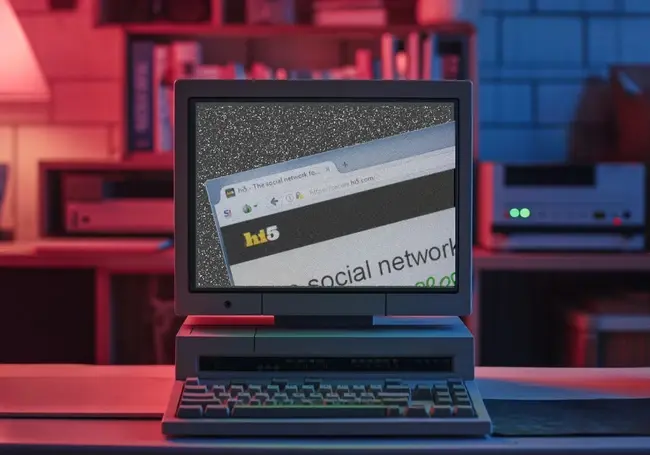
In 2007, Hi5 positioned itself as one of the major social networking sites, second only to MySpace. First, it was sold to Tagged in 2011, and then to MeetMe for a reported $60 million, undergoing some key changes in ownership.
By all accounts, this had set Hi5 on course for oblivion, considering how rapidly social media was about to change. While that's all well and good, Facebook and Instagram have been two of the most successful sites over the last 15 years, and older social networking sites, such as Hi5 and MySpace, have been left in the dust.
For the most part, tricking out profiles with backgrounds, GIFs, and music playlists has given way to cleaner and more integrated social media experiences. In this article, we describe the rise and fall of Hi5, discussing how this sale to Tagged, then the acquisition by MeetMe, had negative effects on how it grew and innovated with trends in social media.
In the end, Hi5 could not innovate and fulfil the needs and expectations of modern users, which ultimately led to its demise, proving that it is becoming increasingly hard for earlier social networking sites to thrive in an increasingly saturated market.
In this article, we explore the rise and decline of Hi5. After its sale to Tagged and later acquisition by MeetMe, Hi5 struggled to keep up with evolving social media trends, leading to its fall from prominence.
What is Hi5?
Hi5 is a social networking site that allows its members to create profiles and interact with friends. Hi5 was founded in 2003 by Ramu Yalamanchi and Akash Garg; it is headquartered in San Francisco, California. During the early days of social media, Hi5 quickly gained traction capitalising on the early success of sites such as Friendster, which pioneered the industry in 2002 but went on to struggle thereafter.
Hi5 allowed the creation of accounts, which was pretty easy: you had to provide an email and password or connect your accounts through other social media such as Facebook or Google. You could personalise your profiles with a lot of information like your gender, birthday, education, and interests, aside from pictures on the profile. To share content and interact with their friends, users would be able to like, comment, or make posts by adding friends or following other users.
Hi5 also has a high-profile dating element; users can flirt and send virtual gifts, as well as enjoy improved interaction with others. As time went on, Hi5 transitioned more into being a social gaming platform, offering games like RockYou Pets and TopFriends, allowing for the purchases of digital tokens so that gamers can make in-game purchases.
Regardless of its early days of fame and multiple rounds of funding, it wasn't able to hold a high status as the social media landscape shifted. This paper chronicled in detail Hi5's history, its change from a networking site to a gaming platform, and its current status in the digital space.
What Happened to Hi5?
Introduced in 2003, Hi5 was founded by Ramu Yalamanchi and rapidly gained recognition as one of the top social networking websites within a very short period of time. By 2007, the site had more than 70 million registered members and was one of the top 40 most-visited websites globally; it enjoyed a strong following in Latin America.
The features that made Hi5 so popular included customisable profiles and the ability to forge social connections, which attracted a wide variety of users seeking online communication. Despite its initial success, Hi5 struggled to keep up with the fast pace of the ever-changing social media environment.
In 2010, the site's layout changed significantly, focusing most of its attention on social gaming. That pivot did bring massive traffic for a time to almost 3 billion visits a month. It also reduced the user count of Hi5 to as low as 46 million.
The main reason that led Hi5 to lose out in this game was essentially its inability to keep pace with other newer and more dynamic platforms like Facebook which received much greater funding and engineering talent. This eventually cost Hi5 its leading position in the social media world and underlined the difficulty often facing early pioneers to readjust to a rapidly changing digital landscape.
Is Hi5 Still Active?
Yes, Hi5 is still active today, but it has undergone significant changes. Originally launched in 2003 as a prominent social networking site, Hi5 quickly became a major player, particularly in Latin America, Europe, and Asia. At its peak, it boasted over 50 million users and was ranked among the world's top ten websites.
However, as social media evolved, Hi5 faced intense competition from platforms like Facebook and MySpace. Despite an initial surge in popularity, Hi5 struggled to keep pace with these emerging giants. The financial crisis of 2008 exacerbated these challenges, leading Hi5 to pivot from a traditional social networking site to focus on virtual goods and social gaming.

In 2010, Hi5 made a major shift, incorporating social gaming features and virtual currency to enhance user engagement. The introduction of games and a developer platform aimed to attract users and capitalize on trends popularized by Facebook. Nevertheless, as users flocked to newer platforms like Instagram, Hi5's growth stagnated.
In December 2010, Hi5 was acquired by Tagged, which later rebranded as If(we) and was subsequently sold to MeetMe in 2017. Despite these ownership changes, Hi5 continues to operate, now primarily focusing on dating features and social gaming experiences.
Why did Hi5 Fail?
The Hi5 app ultimately failed because it couldn’t compete with better-funded rivals like Facebook. By the time Facebook went public in May 2012, it had raised nearly $2 billion in funding, allowing it to invest heavily in its platform and effectively navigate economic downturns. This financial advantage enabled Facebook to experiment with features, such as the News Feed, which became a significant driver of its growth.
In contrast, Hi5 lagged in feature innovation and struggled to keep up with industry trends. While Facebook was capitalizing on social gaming and generating substantial revenue from game developers, Hi5 only pivoted towards social gaming after Facebook had already established a dominant presence in the sector.
Additionally, as Facebook’s network effects took hold, it became nearly impossible for other platforms to compete. With most users’ friends and family on Facebook, the platform became the default social network, leading to a decline in activity on Hi5 and other competitors like Bebo and MySpace.
Ultimately, Hi5’s inability to match Facebook’s rapid innovation and user growth contributed to its downfall.












